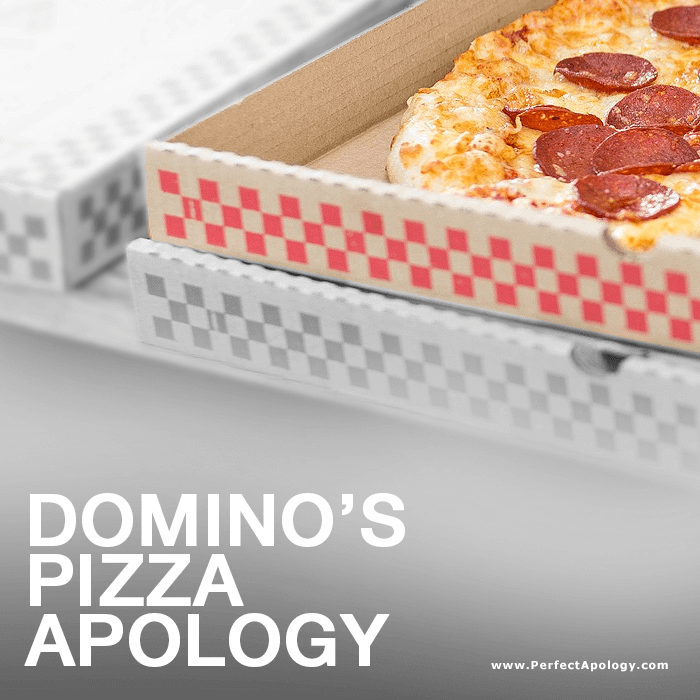Domino's Pizza Apology
The Domino's Pizza apology was issued as a result of the terrible taste of Domino's pizza. Company executives decided to come clean & listen to the harsh criticism of their customers regarding the taste of their pizza.

The Apology Offered By Domino's Pizza
The ad campaign at the centre of Domino's Pizza apology was based on the strategy of using a proactive mea culpa that explicitly acknowledged the problems and defects with their product followed by a promise to improve quality.
What's so surprising about the apology was the fact that it was not caused by a drop in the stock or financial performance, both had remained pretty steady.
When selling pizza represents your company's primary source of profits, officially apologizing for a pizza that is 'devoid of taste' is a risky strategy.
The company's new CEO explains,
We're proving to our customers that we are listening to them by brutally accepting the criticism that's out there. We think that going out there and being this honest really breaks through to people in a way that most advertising does not.Patrick Doyle
The director of Crispin Porter's advertising group defends Domino's Pizza apology this way:
...we realized that we couldn't just come out and say we have a brand new pizza, because no one's going to believe Domino's. The first thing you need to do is own up to the fact that you had to make a whole new pizza.Tony Calcao
As apology ad campaigns go, the Domino's Pizza apology actually surprised many industry experts—it included a clear and explicit acknowledgement of the poor quality of the pizza by describing the sauce as tasting like ketchup and the crust as cardboard.
The campaign was replete with employees reading comments by angry customers, and several statements by the new CEO accepting responsibility and declaring that Domino's had no choice but to improve the product.
The approach is not that different from the strategy adopted by Jetblue and covered in one of our business apology case studies.
Domino's Pizza Apology Evaluation
There are two ways to assess the Domino's Pizza apology.
From a business point of view some critics will point to the risks of being so hard on the product you sell—people might hear half the message and accept the criticisms but miss the main point.
The strategy might simply reinforce negative impressions of an admittedly bad product. But others will point to the benefits of an approach that is bound to attract public attention, curiosity and, by extension, free media exposure, as this apology managed to do.
The public is likely to be smart enough to get the point and appreciate the effort. Had Domino's simply come out with a traditional ad campaign trying to sell their new and improved product it would probably have cost the same and failed.
But having the company's senior executives acknowledge how bad the product is, followed by the stage-two campaign to improve the taste, the positive effects were likely to be much greater.
Set the bar very low and have customers compare the harsh criticisms to the new product.
The improvements will be perceived by most customers as so much more impressive by definition, and the effort, therefore, will be viewed as more genuine and successful.
The key, of course, was to make sure the product was significantly improved, because only minor adjustments in the context of an ad campaign extolling the new and improved taste runs the risk of seriously backfiring -- remember New Coke?
APOLOGY RATING → 9/10
Learn about crafting the perfect business apology or look at another case study.


